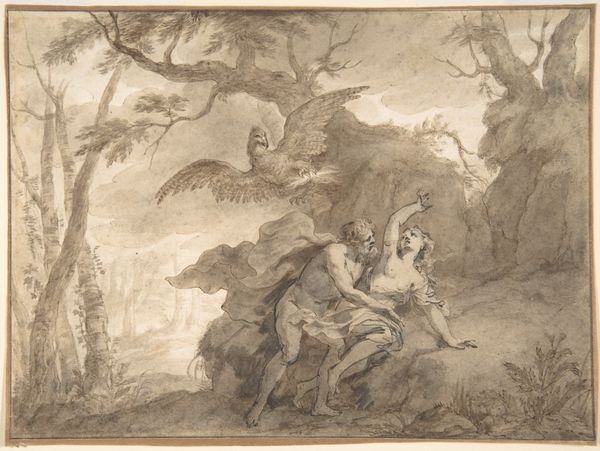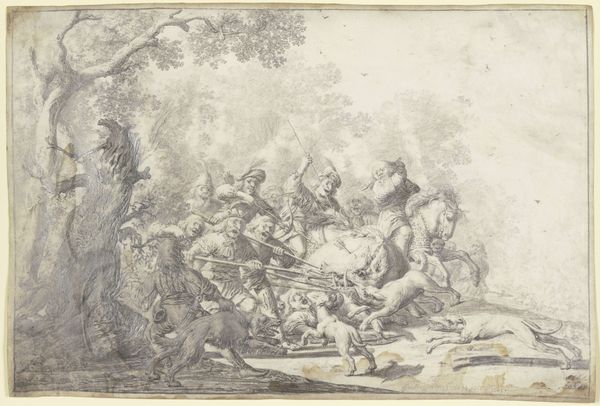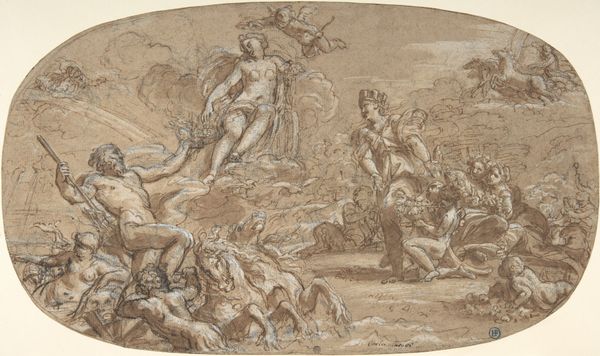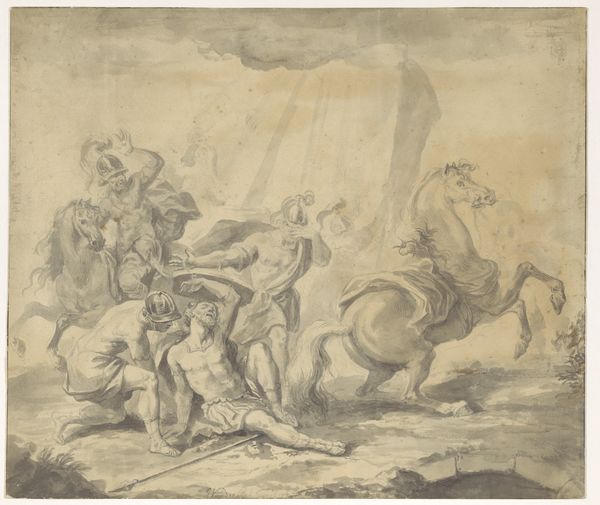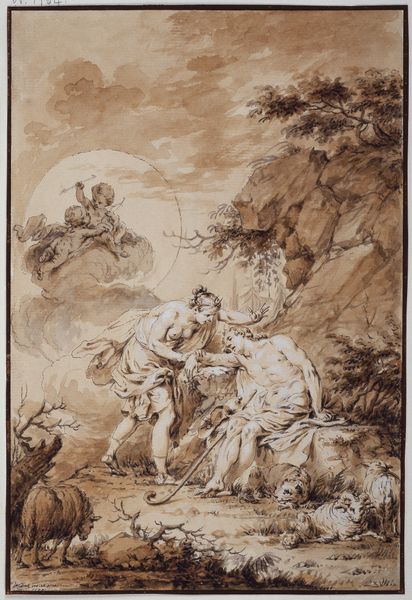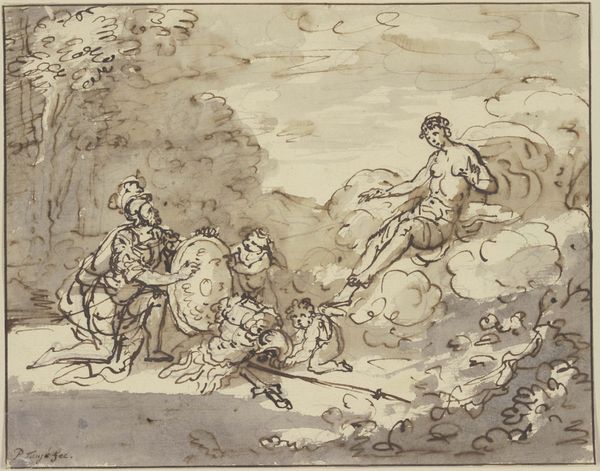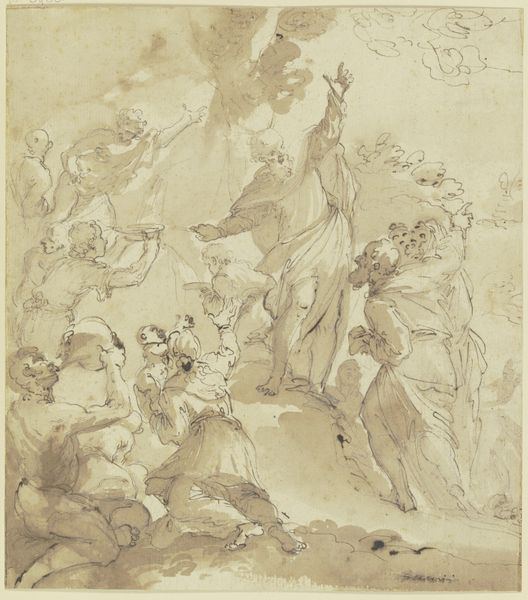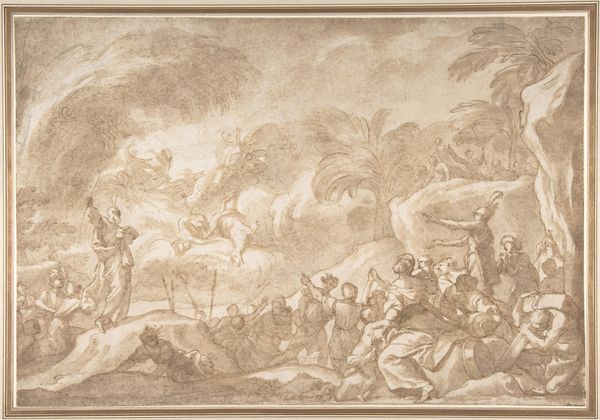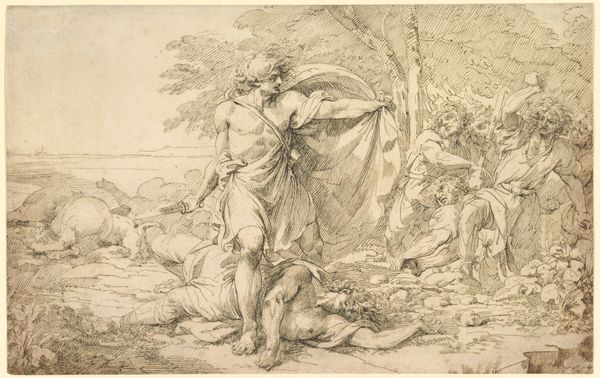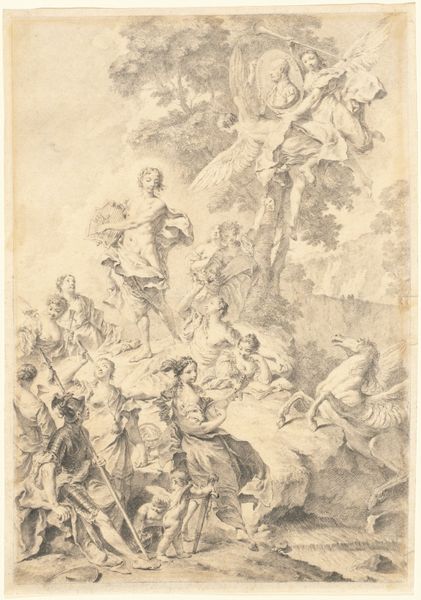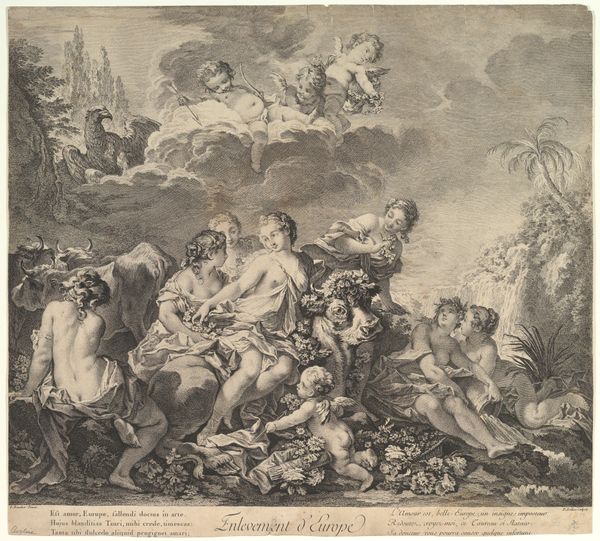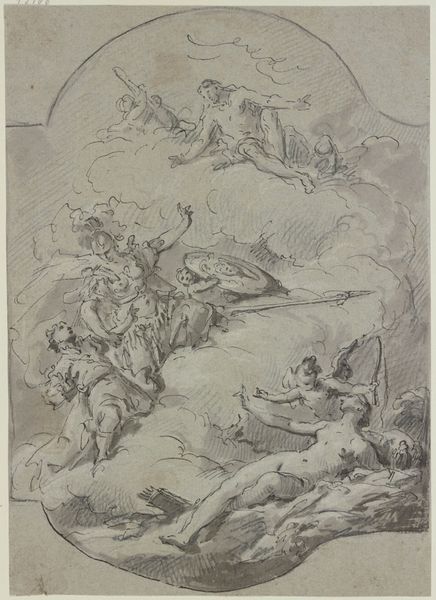
Illustrations to the Metamorphoses of Ovid: Jupiter and Io (.1); Jupiter and Io, disguised as a white beifer (.2); Mercury Rescuing Io from Argus (.3) 1664 - 1700
0:00
0:00
drawing, print, ink
#
drawing
#
allegory
#
baroque
#
ink painting
# print
#
landscape
#
figuration
#
ink
#
watercolour illustration
#
watercolor
Dimensions: each sheet: 6 1/2 x 8 11/16 in. (16.5 x 22 cm)
Copyright: Public Domain
Curator: Here we have a fascinating set of illustrations by Godfried Maes, likely dating from the late 17th century. Titled "Illustrations to the Metamorphoses of Ovid: Jupiter and Io," these drawings depict key scenes from the classical myth. Editor: My first impression is one of classical grace mixed with a slightly unsettling power dynamic. The monochrome ink gives it a ghostly feel. And is that Jupiter riding... a bull? Curator: Indeed. The suite captures Jupiter's transformation into a bull, his encounter with Io, and Mercury's subsequent rescue of Io from Argus. These were common themes in Baroque art, fueled by a resurgence of interest in classical literature. The depiction of metamorphosis itself offered artists exciting opportunities to explore shifting forms and allegorical meanings. Editor: Right, metamorphosis as a metaphor for transformation, power, and, in this case, probably patriarchal control. Io is, after all, being turned into a heifer, a possession, really. What does it tell us about 17th-century social views and perhaps the role of institutions that promoted these classical tales uncritically? Curator: Precisely. It raises complex questions about power structures of the time. And who was the intended audience? Was it commissioned for an elite patron, reinforcing certain social values, or did prints of these images circulate more widely, sparking varied interpretations? Editor: And the female body...Io's transformation serves as a brutal reminder of the objectification that women have faced through the ages. To what extent does Maes' rendering critique or simply perpetuate this narrative? Does it matter that it's presented within the seemingly 'safe' framework of mythology? Curator: These are critical questions to pose when looking at art from this period. Maes was undeniably skillful in his use of ink wash to create depth and movement, a testament to the prevailing aesthetic ideals. His rendering is dynamic. He creates compelling compositions within a highly conventional thematic framework. Editor: Seeing this collection certainly underscores the importance of understanding historical context when interpreting art. Even seemingly beautiful illustrations can reveal uncomfortable truths about the societal structures from which they emerged. Curator: Absolutely. Maes’ artwork serves as a potent reminder that art, regardless of its period, is always embedded in a specific cultural and political environment, demanding careful analysis. Editor: It's this intersection of artistry and social narrative that makes this such a compelling piece to unpack, a starting point for so many relevant conversations.
Comments
No comments
Be the first to comment and join the conversation on the ultimate creative platform.
